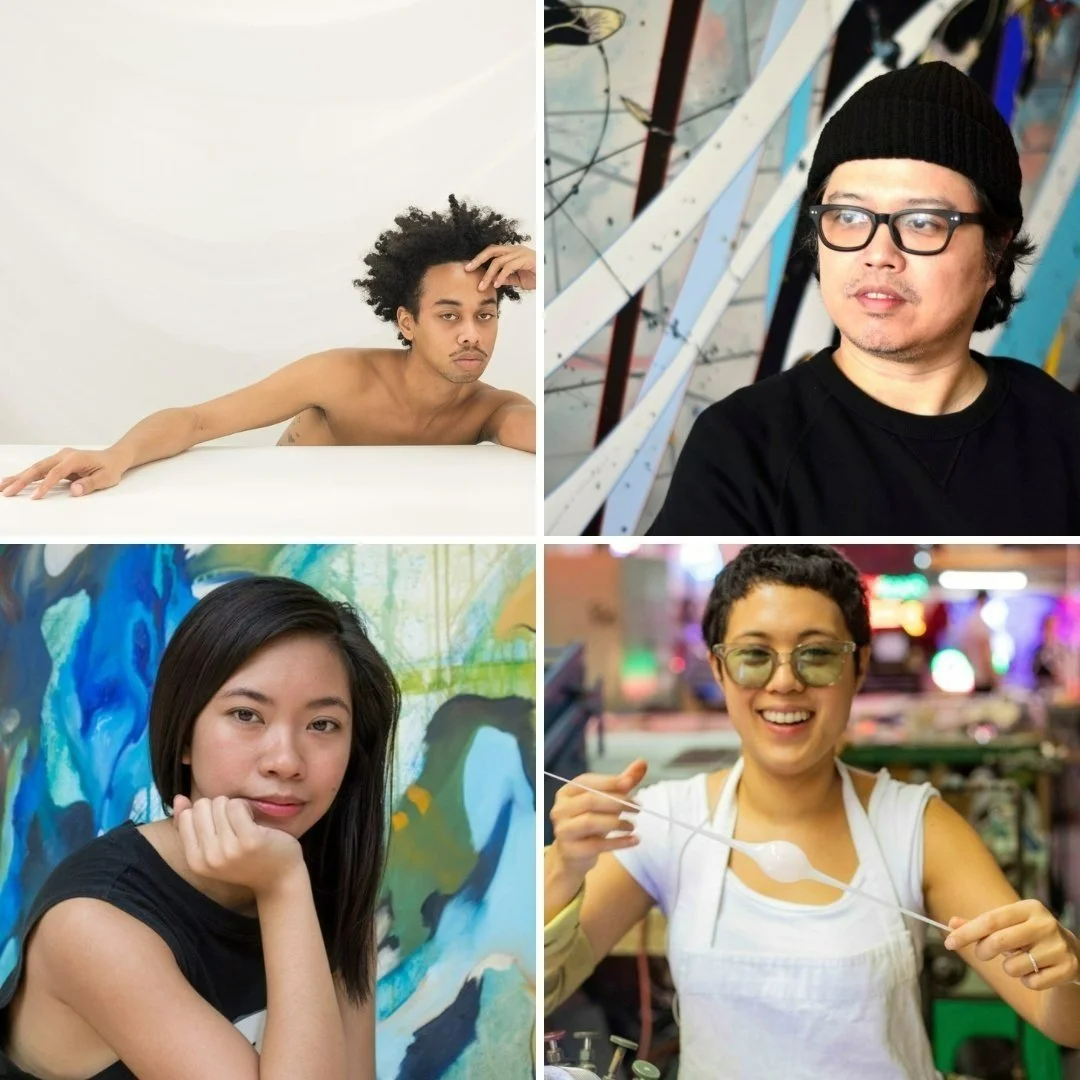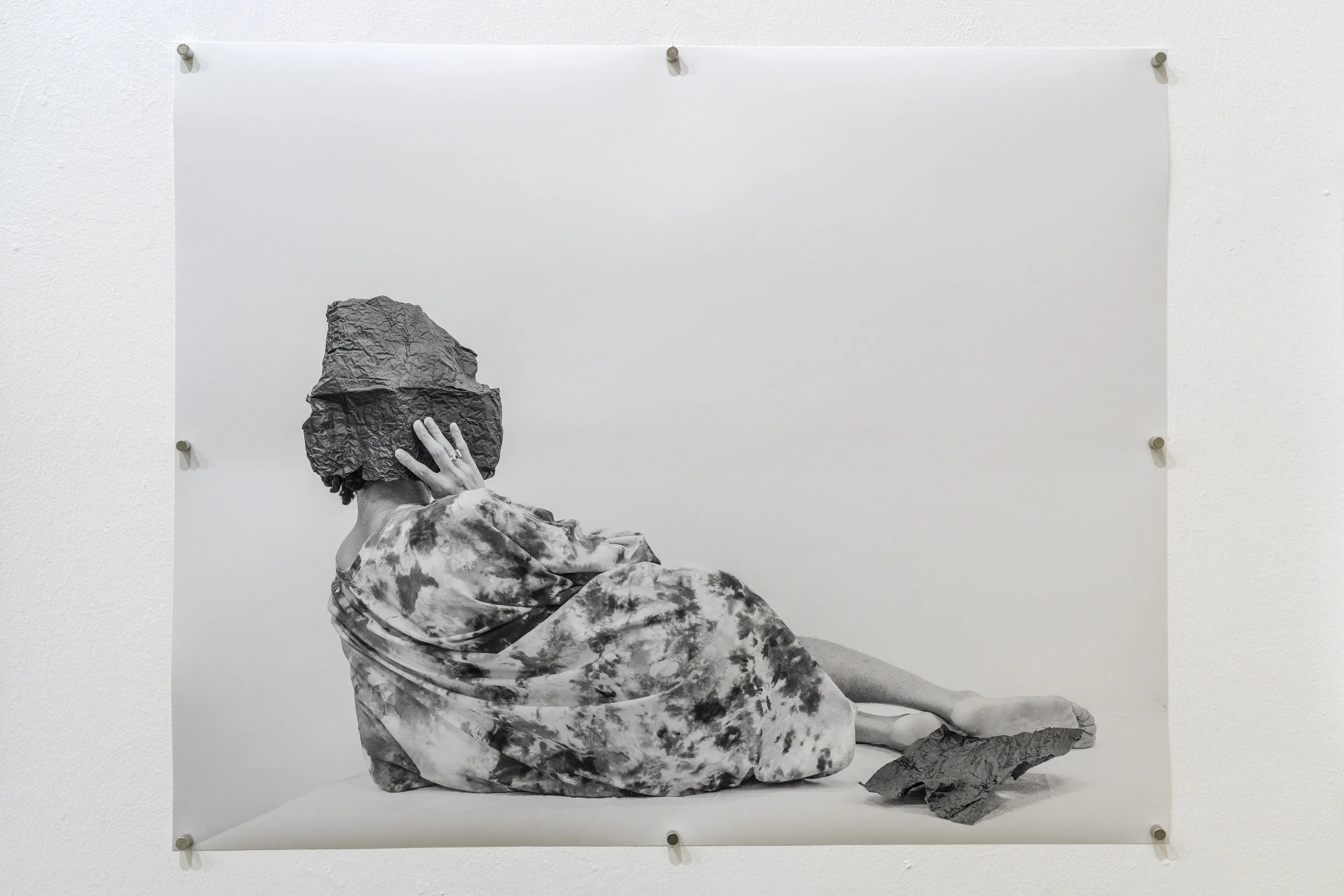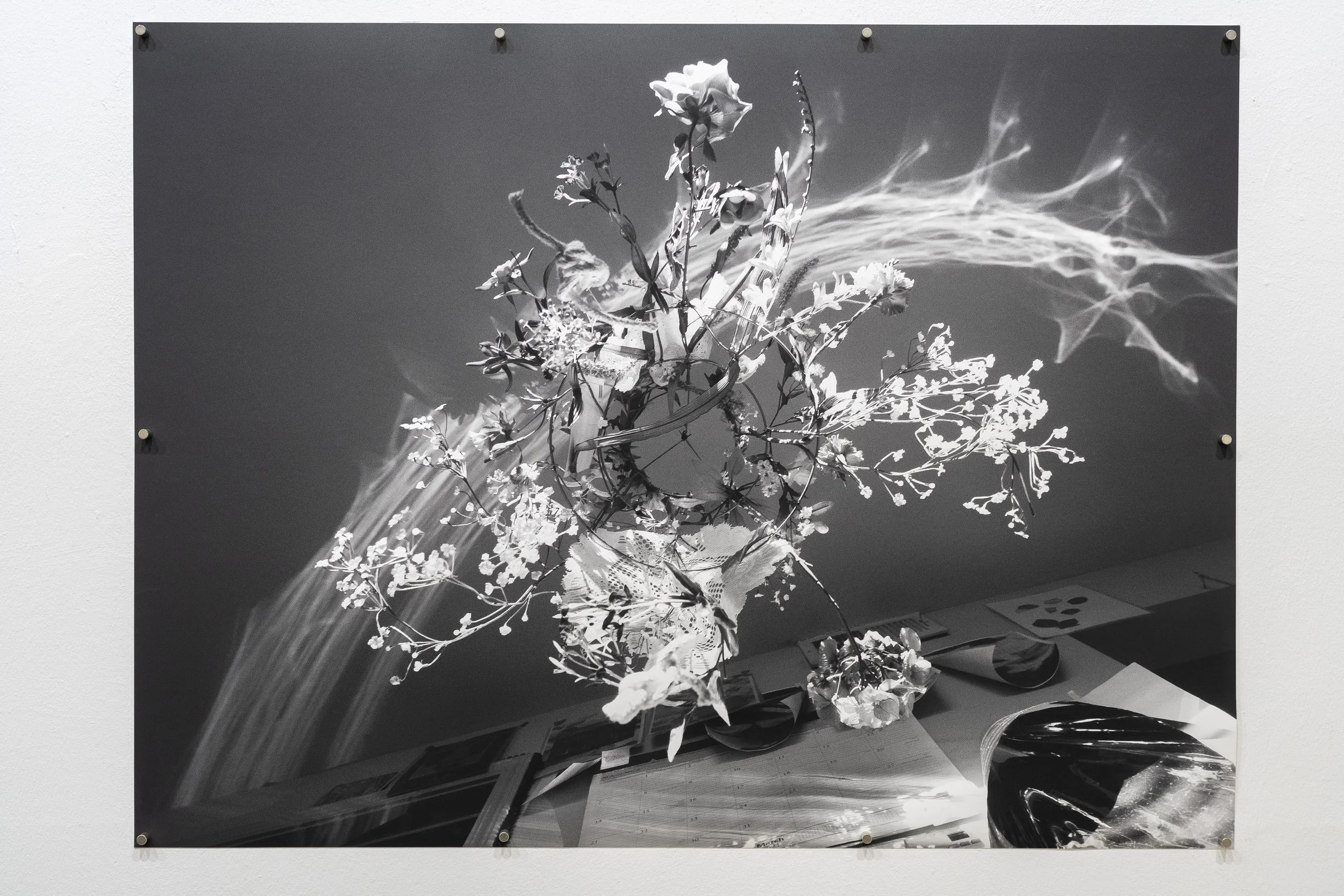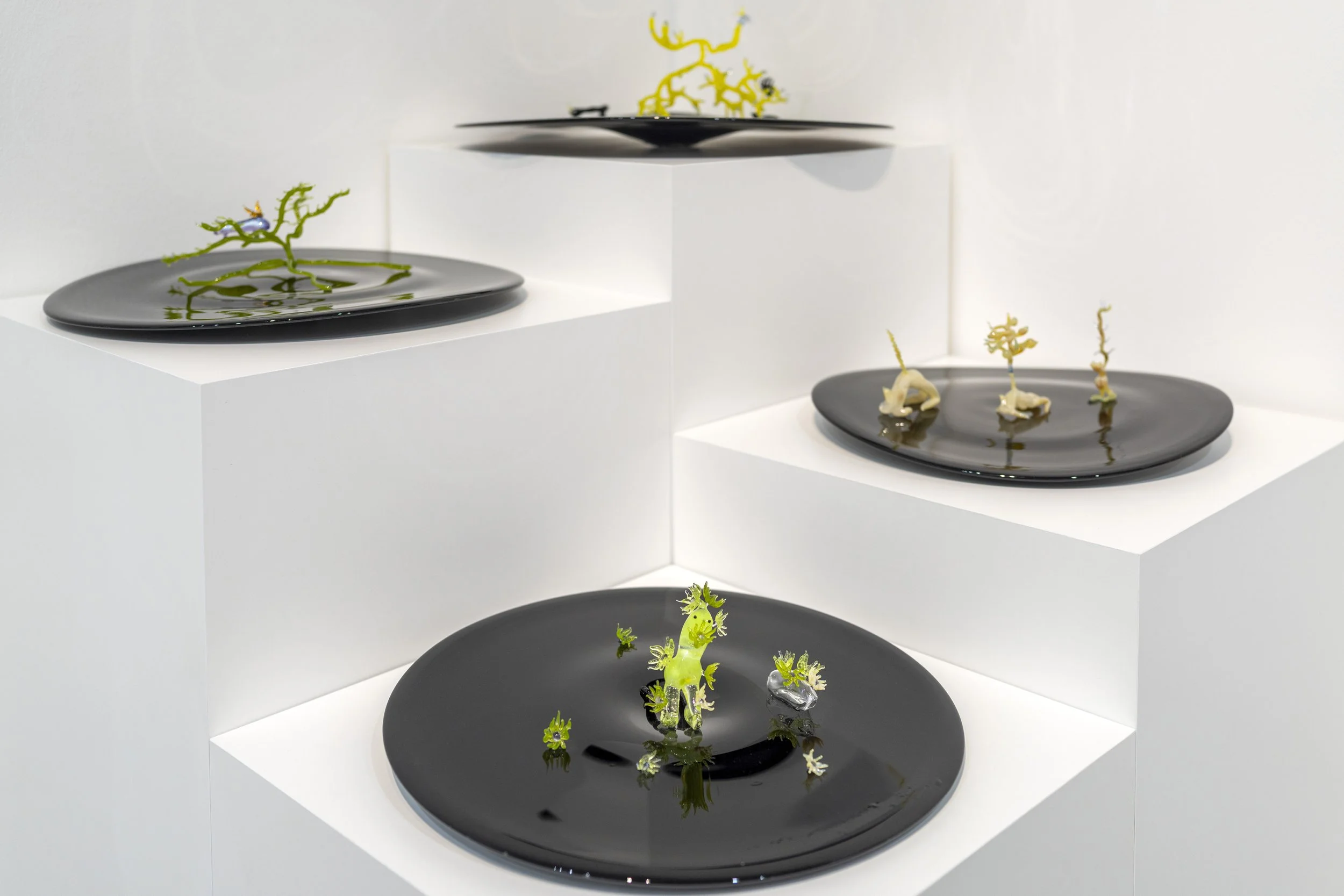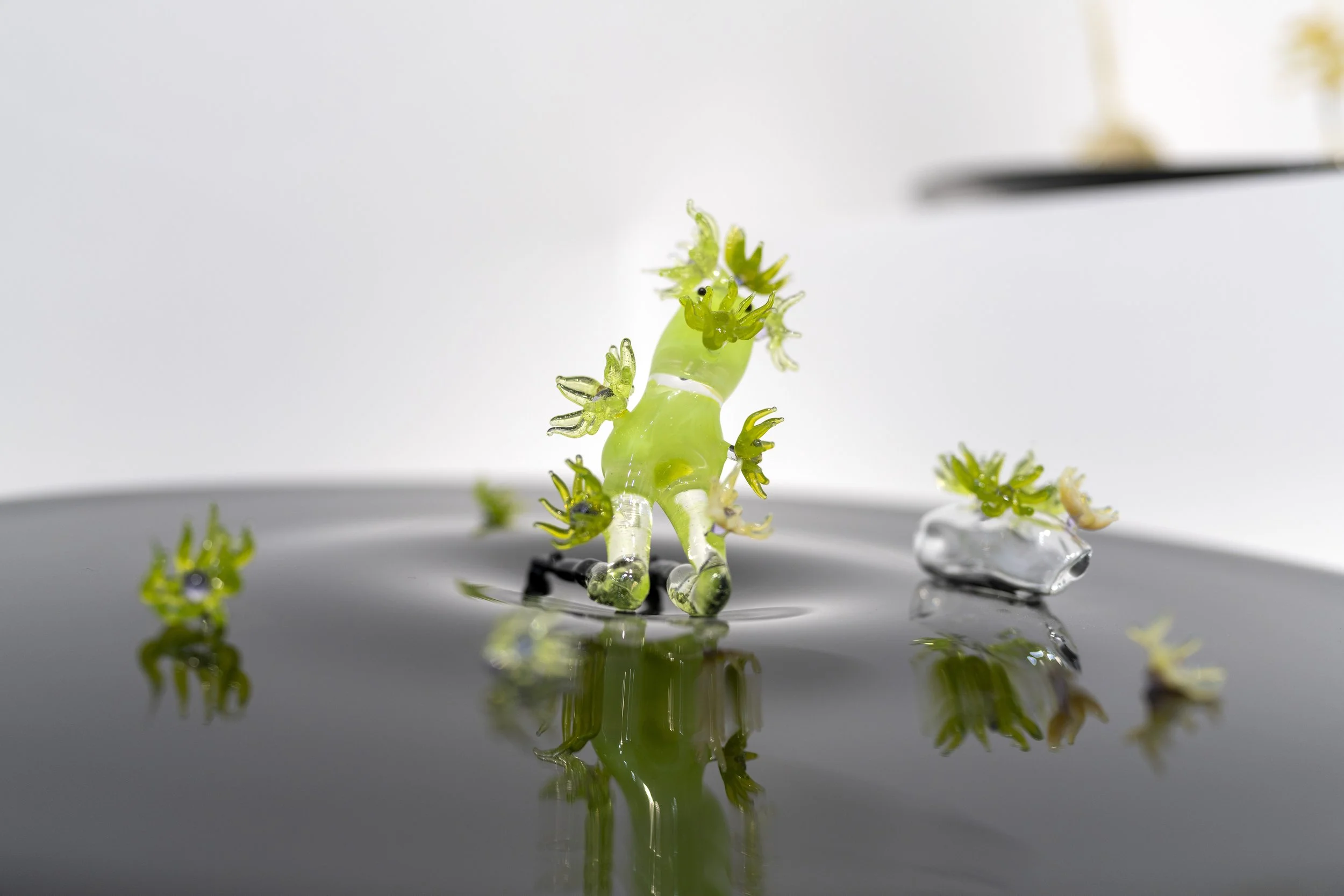S.E.A. FOCUS
Serial and Massively Parallel Curated by John Tung
20 - 28 January 2024 Tanjong Pagar Distripark, Singapore
DAVION ALSTON CLARENCE CHUN FAYE PAMINTUAN GOLDIE POBLADOR
MONO8 is excited to announce our return to S.E.A. Focus. The presentation features the works of Davion Alston, Clarence Chun, Faye Pamintuan, and Goldie Poblador, who all come from the Asian diaspora by way of migration to the Northeast and Southern regions of the United States.
Following the prompt of curator John Tung with the theme "Serial and Massively Parallel," the ensemble illustrates the evolutionary distinctiveness of practices from and with links across the Southeast Asian region. In the realization of this presentation, MONO8 references the Manilamen of the historic Saint Malo village in mid-eighteenth-century Louisiana, who were recorded as the first immigrants to settle in the history of the U.S. More than two hundred years later, we look into the shifts in narratives of those who meandered in similar paths and the new identities formed with the ever-changing socio-political and cultural landscapes.
In his new series of works, Clarence Chun summons the fragmented nature of the contemporary by merging painting and collective memory through found and archival materials. Referencing filmmaking practices, particularly in the pre-digital era where the term "cutting room" defined the editing stage of production, Chun juxtaposes newspaper clippings from significant events that had influenced personal narratives. In the 80s, a time deemed by critics as the second golden era of Philippine cinema, his father, a Chinese-Filipino, worked as a film director and produced Tagalog and Cebuano films. In the same decade, the world saw the passing of John Lennon, an influential figure, and the loss affected many lives, including that of the artist's father. Recollecting these events, Chun attempts to link his practice as a painter to his father's life as a filmmaker to find common ground between two immigrants from different generations. The series also explores the contemporary conditions of data saturation, the speed of technological media and AI (cybernetics consciousness), and observing backdrops of cultural migrations and identity flows while assembling an aesthetic of abstract expressionism, micro pop, and digital media.
Davion Alston assesses his Southeast Asian identity by examining engagements with body, nature, and society. In his video piece, The Pencil Test is a trivial way to prove one's race by pushing pencils through one's hair to determine one's blackness. It was notoriously famous in South Africa during the decades of apartheid and made its way to Southern America. Meanwhile, Alston's series of photographs respond to his notions of conflation and putting together unrelated elements, often obscuring their differences and presenting a more intimate image of the ordinary.
The oil paintings of Faye Pamintuan are studies of translating energies visually as she reflects on living between two countries. For the past twelve years, she had been traveling back and forth between Houston and Bulacan, a province north of Manila. Considering the amount of time, strength, and energy spent while in constant transition, Pamintuan takes hold of these through painting and reimagining the origin and evolution of the cosmos by seizing them on canvas-- symbolically taking control and lingering in the unrecognized moments of passing in between states, just right before the explosion.
Goldie Poblador's Sea Anomaly is a series of sculptures that interpret the vulnerable and essential species of marine invertebrates, specifically those found in the Verde Island Passage in the Philippines. In 2023, two behemoth oil tankers spilled an estimated 870,000 liters of industrial oil into the passage, threatening the survival of its biodiverse marine life. By reimagining these species in glass, Poblador works toward harnessing the ocean's resilience and dark feminine power, toeing the line between beauty and terror, and arming herself with nature's divine power. She invokes Magwayen, the Bisayan goddess of death and the ocean in her contention with neoimperialism and climate crisis. Discovering her sprawling anatomical forms and bioluminescence, what lurks beneath the surface of the ocean man has laid waste to? And whose tremendous and terrifying beauty will we face once the tides turn? Poblador produced this series while completing her artist residency at the Corning Museum of Glass, where she engaged in an investigation to reproduce the mysterious techniques surrounding the 19th-century Blaschka glass models.

